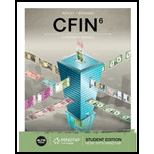
Weighted Average Cost of Capital (WACC) is the required
An optimal capital structure of a company is a mix of debt, equity and preferred stock which can be used to maximize the company’s stock price. Therefore, a target proportion of capital structure and cost of each financing can be used to determine the WACC of the company.
Here,
Proportion of debt in the target capital structure “
Proportion of preferred stock in the target capital structure “
Proportion of equity in the target capital structure “
After tax cost of debt, preferred stock,
Want to see the full answer?
Check out a sample textbook solution
- Depreciation is:a) The increase in the value of an asset over time.b) The allocation of the cost of a tangible asset over its useful life.c) An amount paid for the maintenance of an asset.d) An asset's market value at the end of the accounting period.arrow_forwardDepreciation is:a) The increase in the value of an asset over time.b) The allocation of the cost of a tangible asset over its useful life.c) An amount paid for the maintenance of an asset.d) An asset's market value at the end of the accounting period. Need helparrow_forwardWhat is the corporate finance how this is the part of finance?arrow_forward
- Explain! Which of the following represents the primary goal of financial management?A) Maximizing net incomeB) Maximizing shareholder wealthC) Minimizing costsD) Maximizing market sharearrow_forwardWhich of the following represents the primary goal of financial management?A) Maximizing net incomeB) Maximizing shareholder wealthC) Minimizing costsD) Maximizing market sharearrow_forwardExplain! Which of the following is an example of a capital budgeting decision?A) Determining how to finance a new projectB) Deciding whether to pay dividends to shareholdersC) Deciding whether to purchase a new piece of equipmentD) Managing the company's cash balancesarrow_forward
- Explain What does a beta coefficient of 1.5 indicate for a stock?A) The stock is less volatile than the marketB) The stock has no correlation with the marketC) The stock is 50% more volatile than the marketD) The stock is 50% less volatile than the marketarrow_forwardWhat does a beta coefficient of 1.5 indicate for a stock?A) The stock is less volatile than the marketB) The stock has no correlation with the marketC) The stock is 50% more volatile than the marketD) The stock is 50% less volatile than the marketarrow_forwardWhat is the formula for calculating the net present value (NPV) of an investment?A) Future Cash Flows × Discount RateB) Present Value of Cash Inflows - Initial InvestmentC) Internal Rate of Return - Discount RateD) Net Income / Initial Investmentarrow_forward
- Which of the following is an example of a capital budgeting decision?A) Determining how to finance a new projectB) Deciding whether to pay dividends to shareholdersC) Deciding whether to purchase a new piece of equipmentD) Managing the company's cash balancesarrow_forwardWhat is the formula for the current ratio?A) Current Assets / Total LiabilitiesB) Current Liabilities / Total AssetsC) Current Assets / Current LiabilitiesD) Total Assets / Current Liabilitiesarrow_forwardWhat is the primary goal of financial management?A) To maximize profitsB) To maximize shareholder wealthC) To minimize costsD) To maximize market sharearrow_forward
 EBK CONTEMPORARY FINANCIAL MANAGEMENTFinanceISBN:9781337514835Author:MOYERPublisher:CENGAGE LEARNING - CONSIGNMENT
EBK CONTEMPORARY FINANCIAL MANAGEMENTFinanceISBN:9781337514835Author:MOYERPublisher:CENGAGE LEARNING - CONSIGNMENT
